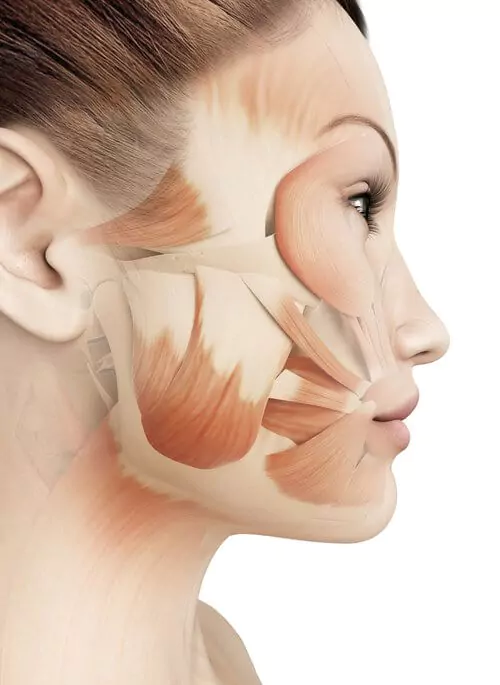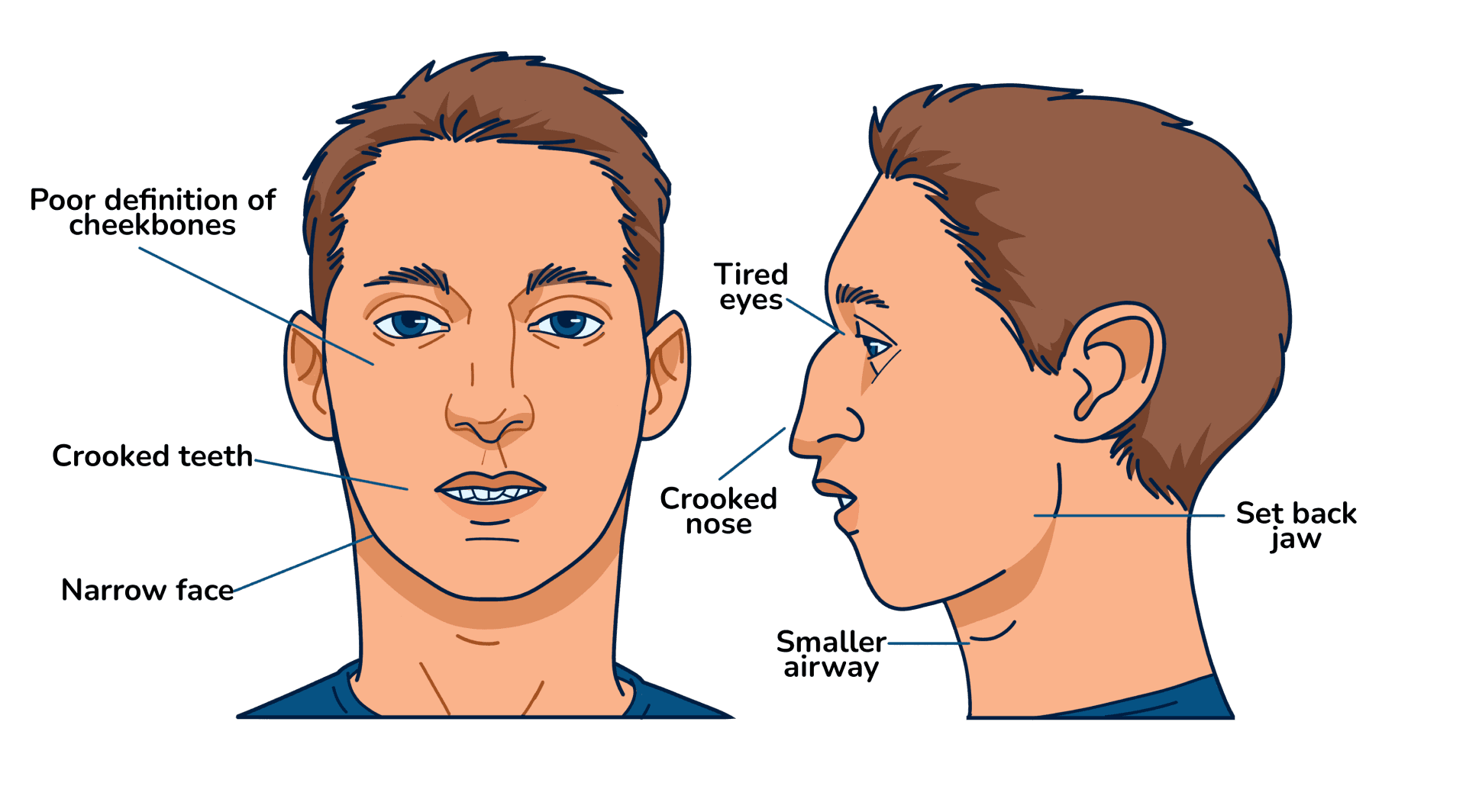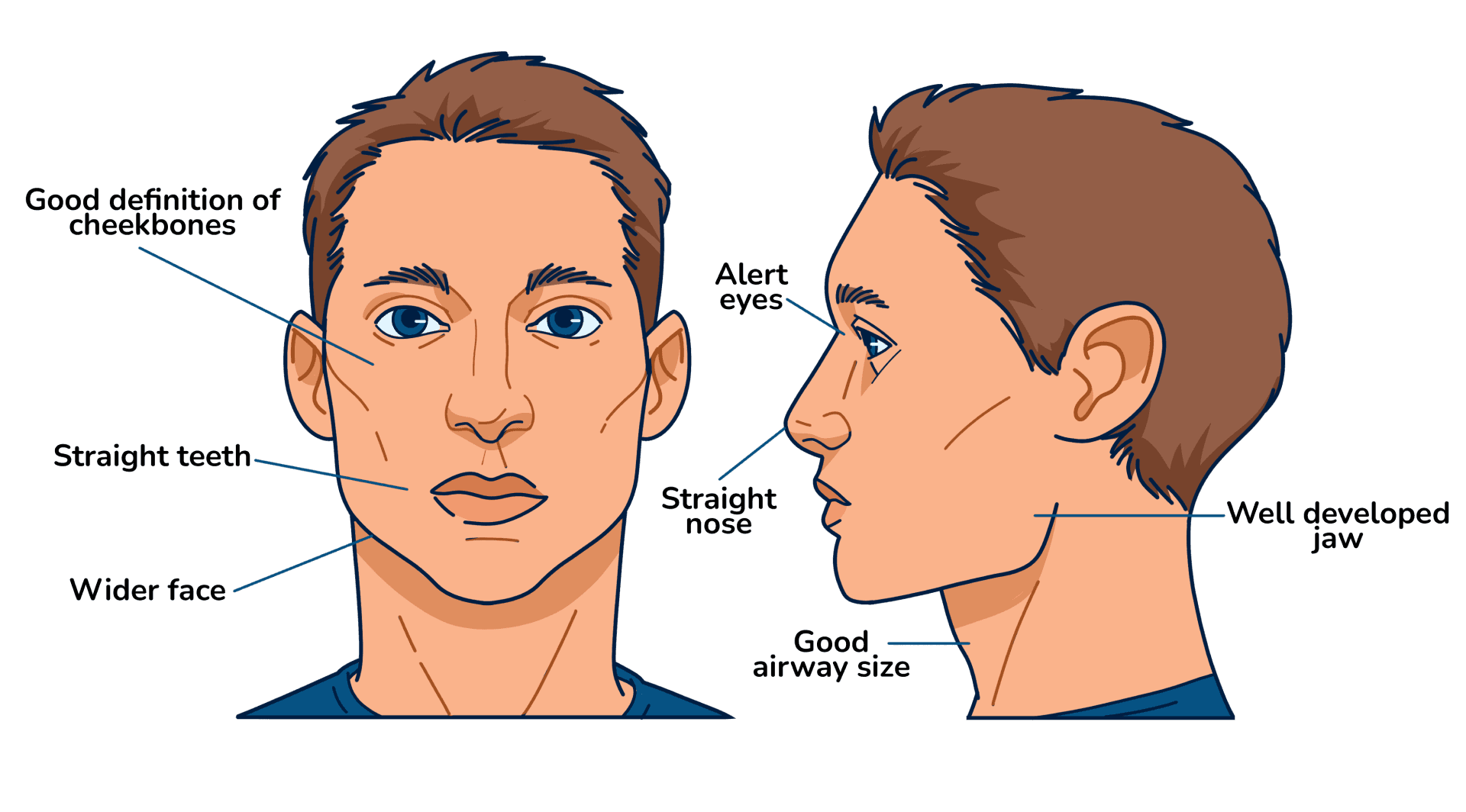Orofacial Myofunctional Therapy
Myofunctional therapy is a customized program of tongue and face related exercises that correct abnormal muscle movement patterns in the face, mouth, tongue and throat. These abnormal patterns are called Orofacial Myofunctional Disorders (OMD) and can lead to improper breathing, chewing, speaking, swallowing, and can cause weak jaw and facial appearances. Through Myofunctional therapy, improvements will occur by learning proper muscle function, strengthening weak muscles, and making behavior modifications by ensuring:
Untreated OMD’s (orofacial myofunctional disorders) facial structure
Myofunctional therapy in as little as 9-12 months
Three facts about Myofunction Therapy
Is collaborative
While myofunctional therapy is an effective treatment for lots of eating, breathing, and sleeping issues, it hardly ever is the only treatment used. A team of people - ENT, bodyworkers (osteopath, massage therapist, chiropractor and physiotherapist) and dental professionals - often will work together to accomplish your health goals. Often your myofunctional therapist will refer you to other professionals to achieve better posture and breathing goals.
Greatly improves appearance
Coordinating and strengthening proper face and mouth muscle movements will improve your facial appearance. Changes are gradual but effective, your cheeks become more youthful and firm, you develop stronger lips, a wider palate, a stronger jawline, and it improves your posture. To compare the progress, before and after pictures will be taken.
Requires dedication
Myofunctional therapy is like having a personal trainer for your orofacial muscles (all the muscles below your eyes and above your shoulders). In order to strengthen and coordinate these muscles, you must practice the exercises and activities provided by your myofunctional therapist on a regular basis, until correct muscle patterns are established. It involves more than the time you have spent with your myofunctional therapist twice a month; it requires daily commitment.
Tongue-Tie: Effects and Treatment
Tongue-tie, or a restricted frenum, are terms used when the frenum is short and restricts the normal mobility of the tongue. The lingual frenum is the cord of tissue that stretches from under the tongue to the floor of the mouth. Everyone has a lingual frenum but in some people, it is tighter or shorter than it should be. A tongue-tie is present at birth but often goes undetected. When the tongue is physically anchored to the floor of the mouth by a tongue tie, it can have a negative effect on oral development, oral function, speech, breathing and swallowing.
Symptons of tongue tie
In infants - Difficulty breastfeeding or bottle feeding, colic, reflux, painful nursing, difficulty introducing solids, ear infections.
In children- Gagging or choking on foods, difficulty swallowing pills, delayed development of speech, messy or noisy eating, ear infections, teeth grinding, snoring.
In adults- Chronic headaches or migraines, neck and shoulder tension, jaw pain, teeth grinding, snoring, obstructive sleep apnea, narrow jaws, orthodontic problems or relapse, inability to speak clearly when speaking loud or soft, mumbled speech, and even poor dental health as evidenced by multiple restorations and root canals specially on the molars.
The function of the tongue
If your tongue is not able to do the functions shown below, or uses other muscles to help, you may want to consider an evaluation with an Orofacial Myofunctional Therapist. It could be something structural such as a tongue-tie, or a tongue space issue, or it could be functional matter such as a low tongue tone that prevents it from achieving optimal function.
How OMT Helps with Tongue-Tie
If a tongue-tie is identified, a simple surgical procedure called a "frenectomy" may be recommended to release the restricted frenum. During your initial Orofacial Myofunctional Therapy (OMT) assessment, we screen for tongue-ties and help determine whether a frenectomy is needed. In some cases, myofunctional therapy alone can improve the mobility of the tongue without requiring surgery. Throughout the program, your therapist will monitor the tongue’s range of motion. If exercises are hindered by a tongue restriction, a referral for a frenectomy will be made. Should the procedure be necessary, we will refer you or your child to a specialist. Afterward, we will provide exercises to support healing and prevent the frenum from reattaching.
Frequently Asked Questions
Curious About OMT? Let's Talk!
Have questions about OMT? We’re here to help! Whether you’re wondering if it’s the right fit for you or need more details about the process, our team at Willow West Dental is just a call or email away. Reach out to us, and we’ll happily guide you through everything you need to know for a confident, clear smile!
(519) 836-1077
willowwestdental@gmail.com




